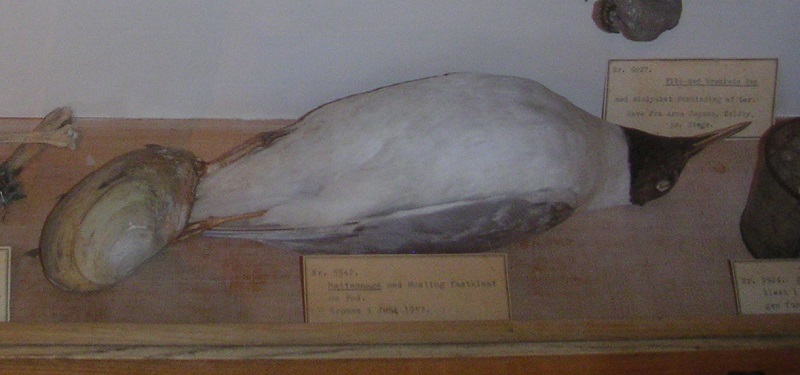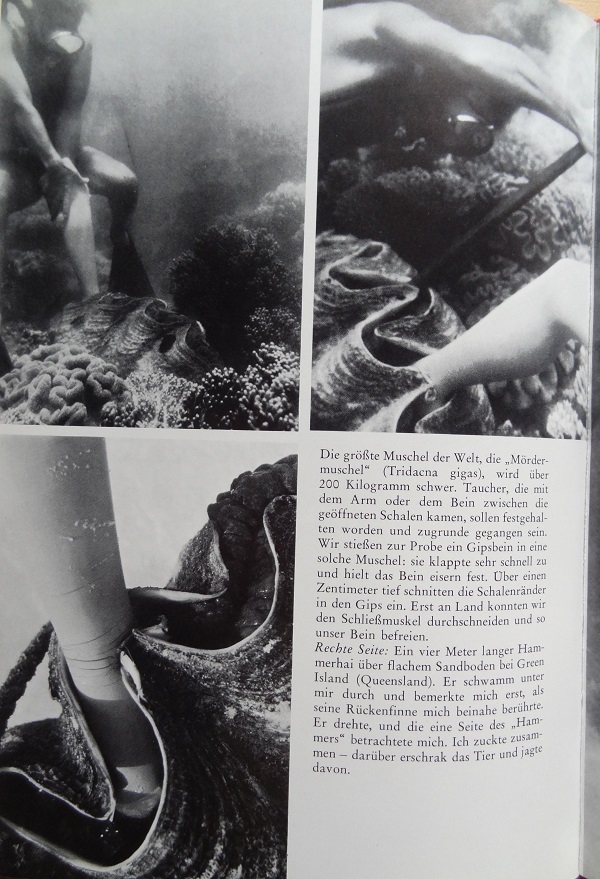Bivalves are usually not the kind of animals which are regarded as potentially dangerous. But they can actually cause a lot of trouble or even fatal accidents if they accidentally grasp other beings with their shells. One of this cases is shown here, a quite unfortunate black-headed gull (Chroicocephalus ridibundus) which had its feet caught between the shells of a freshwater mussel. The mussels in question could be a swan mussel (Anodonta cygnea) or another Anodonta species. Like so many other cases from the „shit happens“- series, this photo was taken at the Danish Museum for Hunting and Forestry at Hørsholm.

Black-headed gull caught by a mussel
I sadly don´t know more about the background of this case, for example if the gull was found dead or if it managed to come somehow out of the water with the mussel crasped on its legs. Similar cases of birds getting caught with their bills in mussels are well recorded, and Darren Naish wrote a very interesting blogpost about this topic at Tetrapod Zoology, including hypothetical accidents involving pterosaurs and giant prehistoric clams like Platyceramus.
Besides waterfowl, newts can be also highly affected by clam-related accidents. In one study which involved the alpine newt (Ichthyosaura alpestris) population of a pond in Austria, 78 of 182 caught specimens had clams attached. In most cases this clams, which belonged to a Sphaerium-species, were attached to the limbs, in one case even on the mandible. Of the 78 clam-plaqued newts 18 had even two clams attached at once, and two other specimens had even three. This clams were so tightly attached on the newts that it was not possible to remove them without crushing the shells or harming the newts. One try resulted in the accidental amputantion of a newt´s phalange. In 15 newts missing toes were recorded, which were most probably also a result of clam-accidents.
There are also stories of giant clams of the genus Tridacna, which involve lethal accidents of pearl divers. The question remains how many of them are true and not just legends, but it seems really not fully unreasonable that such accidents could have happened on occasion. The famous diving pioneer and marine biologist Hans Hass once made an experiment to test this idea. He used the leg of a window dummy which was filled with plaster and pushed it between the shells of a giant clam. The shells of the giant bivalve closed immediately, and it was fully impossible to remove the artificial leg. They had to haul the whole giant clam out of the water and cut the closing muscles to get the leg free. Something like this could theoretically really happen to people wading in the shallow water of coral reefs. Here are some photos of this experiment from the book In unberührte Tiefen (1971) by Hans Hass:

Artificial leg in giant clam (Tridacna gigas). Photos from „In unberührte Tiefen“ by Hans Hass.
So possibly the now somewhat outdated German synonym „Mördermuschel“ (killer clam) for the large Tridacna species is not fully inappropriate.
See more about giant clams on Bestiarium here.
